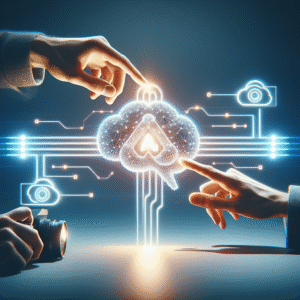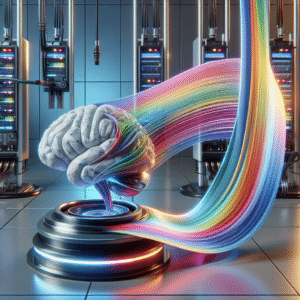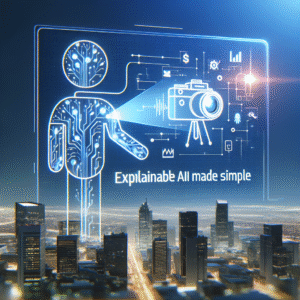What does the future of communication look like for you? As someone who’s always been fascinated by technology and its potential to transform our lives, I find myself constantly pondering this question. The advent of 5G technology has sparked a significant shift in how we connect with each other and the world around us. Let’s take a closer look at what 5G technology entails and how it will revolutionize communication in the years to come.
Understanding 5G Technology
5G, or fifth-generation wireless technology, represents the latest advancement in mobile telecommunications. Unlike its predecessors, 4G and 3G, 5G offers extraordinarily faster data speeds, reduced latency, and the ability to connect a greater number of devices simultaneously. This leap in technology is not just about speed; it’s about enhancing our daily communication, whether personal or professional.
Key Features of 5G
Faster Data Speeds
One of the most exciting features of 5G is its exceptionally high data transfer rates. While 4G networks can manage speeds up to 100 Mbps, 5G can reach up to 10 Gbps. This means I can download a full-length movie in under a minute or stream high-definition content without buffering. Imagine the convenience of having seamless video calls with friends or family, even in remote locations.
Lower Latency
Latency refers to the time it takes for data to travel from one point to another. With 5G, latency is significantly reduced, which is crucial for real-time communication. Current 4G networks can have a latency of around 30-50 milliseconds, while 5G aims to achieve latencies as low as 1 millisecond. This improvement is vital for applications such as online gaming, virtual reality, and autonomous driving technology, where every millisecond counts.
Massive Device Connectivity
5G technology can support up to one million devices per square kilometer. For me, this connectivity is essential as our world becomes increasingly integrated with the Internet of Things (IoT). From smart homes to connected vehicles, the ability to connect multiple devices simultaneously opens up a realm of possibilities I can’t wait to explore.
The Impact of 5G on Communication
Now that I have a better understanding of what 5G technology is, I can’t help but think about the implications it holds for communication. The impact will be profound and widespread, transforming everyday interactions, business operations, and even how I enjoy entertainment.
Enhanced Mobile Communication
5G is set to enhance mobile communication in various ways:
- Video Calling: The high speeds and low latency mean I can have crystal-clear video calls without interruptions, even with multiple participants.
- Messaging Apps: Instant messaging applications will feel instantaneous, and I’ll be able to share high-resolution images and videos quickly and without hassle.
This is significant for professionals and individuals like me who rely on communication tools for work and maintaining relationships.
Immersive Experiences
One of the most transformative aspects of 5G technology is its ability to facilitate immersive experiences through augmented reality (AR) and virtual reality (VR). With the potential for such innovations, I can engage in more meaningful interactions.
- Virtual Meetings: Imagine attending a virtual meeting where I can interact with a life-like avatar of my colleague. It feels more personal compared to just viewing a flat screen.
- AR in Daily Life: With AR apps powered by 5G, I can engage with my environment in exciting new ways, such as overlaying digital information onto my real-world surroundings.
The possibilities for immersive communication experiences are virtually limitless.
5G and Business Communication
As I think about the business sector, the rollout of 5G technology stands to significantly enhance how companies operate, communicate, and innovate.
Remote Work Dynamics
The COVID-19 pandemic has vastly changed how we view remote work. 5G will further enhance this experience:
- High-Quality Streaming: Video conferencing will be even more effective, allowing for seamless presentations.
- Collaborative Tools: With teams scattered across the globe, high bandwidth will enable more sophisticated collaborations using shared platforms and tools.
As someone who has adapted to working remotely, having a reliable and fast connection is crucial, and 5G offers that promise.
Improved Supply Chain Management
For businesses, 5G allows for more efficient supply chain management through real-time data sharing and monitoring. With the ability to gather data from various sources and devices quickly, companies can streamline their operations. For me, this means that the products I order can be tracked in real-time, providing updates that improve my shopping experience.
| Feature | 4G Network | 5G Network |
|---|---|---|
| Data Speeds | Up to 100 Mbps | Up to 10 Gbps |
| Latency | 30-50 ms | 1 ms or lower |
| Device Connectivity | 2,000 devices/km² | 1,000,000 devices/km² |
| Reliability | Moderate | High |
| Use in IoT | Limited | Extensive |
Challenges and Considerations
While the advantages of 5G are promising, there are challenges and considerations to keep in mind.
Infrastructure Development
The rollout of 5G technology requires significant infrastructure investment. For me, the transition from 4G to 5G isn’t just about upgrading devices but also building extensive networks of antennas and base stations. The process can take time and significant funding, especially in rural areas where connectivity might still be a challenge.
Security Concerns
With greater connectivity comes increased risks. As I think about the future, cybersecurity becomes vital. The more devices connected to the network, the more opportunities there are for malicious attacks. Therefore, it’s critical for service providers and users to prioritize security and privacy measures.
The Role of 5G in Smart Cities
I find it fascinating how 5G technology is integral to the development of smart cities. A smart city uses digital technology to enhance performance, well-being, and quality of life for its residents.
Efficient Public Services
With 5G, city infrastructure can communicate and function more efficiently. For example:
- Smart Traffic Management: Traffic signals can adapt in real-time to reduce congestion and improve traffic flow.
- Waste Management: Sensors on waste bins can notify collectors when they are full, optimizing collection routes and schedules.
Living in a smart city powered by 5G provides a more efficient lifestyle, which I find incredibly exciting.
Enhanced Public Safety
5G technology will play a significant role in public safety. Enhanced surveillance systems will be able to utilize real-time footage for faster response to incidents. This means not just a safer environment for me, but also increased trust in the systems in place to maintain public safety.
5G and Healthcare Communication
One area in which I see 5G having an incredible impact is healthcare. The ability to deliver timely and accurate information can genuinely save lives.
Telemedicine
The COVID-19 pandemic highlighted the importance of telehealth services. However, telemedicine can be optimized further with 5G technology. High-resolution video consultations and the ability to transfer medical data in real-time enable healthcare professionals to provide better care.
Remote Patient Monitoring
With 5G, wearables can transmit data directly to healthcare providers in real-time. For someone like me, who may need to monitor health conditions, this means better management without the need for constant visits to healthcare facilities.
Conclusion: Embracing the Future with 5G
As I reflect on the future of communication with the advent of 5G technology, it’s clear that we are on the brink of significant change. The innovations associated with 5G will touch nearly every aspect of our daily lives, from how we communicate with friends and family to how businesses operate on a global scale.
The possibilities are vast, but with those possibilities come challenges — challenges that we must navigate carefully. By prioritizing security, investing in infrastructure, and embracing the potential of technology, we can look forward to a future where communication is not just faster, but more integrated, immersive, and beneficial for all.
I’m eager to see how 5G unfolds in the coming years and how it shapes my life and the world at large. As we transition into this new era, I hope to embrace the opportunities that arise, staying connected in ways I had never dreamed were possible. The future of communication is not just about technology; it’s about enhancing our relationships and enriching our lives.






